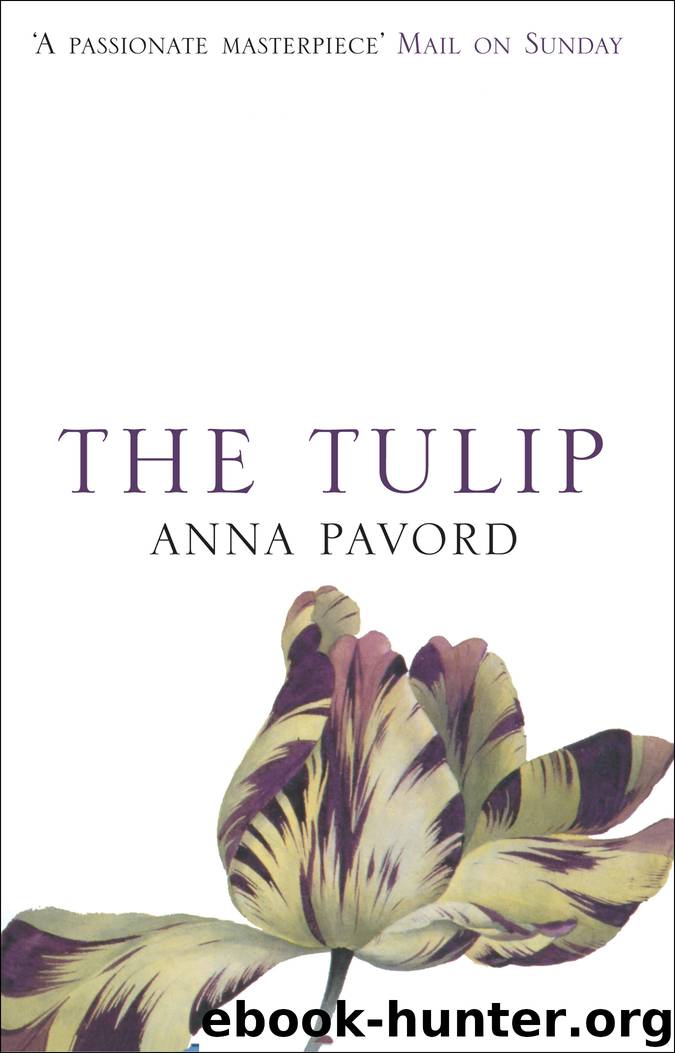The Tulip by Anna Pavord

Author:Anna Pavord
Language: eng
Format: epub
Publisher: Bloomsbury Publishing
Published: 2014-11-11T05:00:00+00:00
Chapter V
Dutch Dominance
Tulipomania was a chastening experience for the Dutch. The gay paintings of tulips accompanied by vividly plumaged parrots and strange shells which had mirrored the early seventeenth-century fascination with all things exotic, gave way to more gloomy groupings of tulips with skulls, hour-glasses and other reminders of the transitoriness of things. But even after the crash of spring 1637, tulip bulbs still had value. An anonymous Dutch painting c16401 shows Flora with a pair of scales, a jewel on one side, a tulip bulb on the other; the bulb weighs more heavily. A malevolent-looking Pan surveys the scene while supporting Cupid who is clutching a tulip flower in his hand. And documents of 1643 relating to the estate of the nurseryman Jan van Damme of the Kleine Houtweg, Haarlem, show that, even after the end of tulipomania, the average yearly wage of a Haarlemer would still not be enough to buy one of van Damme’s best tulips. Salomon Seijs paid him 180 guilders for one ‘Gouda’ and 315 guilders for a ‘Manassier’. Dirck Janss parted with 300 guilders for a single bulb of the variety ‘Bellaert’. The widow Ruth van Berckhoff paid 325 guilders for an English ‘Admiral’, evidently a highly prized tulip as another buyer, Willem Willemss handed over 402 guilders for the same variety. ‘Paragon Lieffkens’ commanded high prices too, Anthony Gerrit paying van Damme 300 guilders for his bulb. But bulbs from the Lieffkens stable were always among the most expensive available; at the Alkmaar tulip auction of 1637, an offset of an ‘Admiral Lieffkens’ bulb, weighing only 59 azen, had sold for 1,015 guilders.
The continuing demand for flower paintings, too, showed that the tulip was not universally reviled, even though it had been responsible for bankrupting so many who had traded in tulip futures. From 1650–1720 Jan Davidsz de Heem, Daniel Seghers, Abraham Mignon, Simon Verelst, Rachel Ruysch all included tulips in their work, often setting them in the top right-hand corner of the mixed arrangements they painted. None of the later artists, though, plagiarised themselves as gaily as Jan Brueghel had done at the beginning of the seventeenth century. His flower piece in the Rijksmuseum, Amsterdam is virtually identical to his panel in the Kunsthistorisches Museum, Vienna. His son Jan Brueghel II continued the process, making another copy of the painting, which is now in the Alte Pinakothek, Munich. The elder Brueghel had done much the same with his Vase of Flowers2 which has a virtual twin in Flowers in a Stoneware Jar.3 The Vase of Flowers painting has the more interesting foreground, with jewels lying carelessly to the right of the vase and in the Flowers in a Stoneware Jar, the tulip at the top of the Vase of Flowers painting is replaced by an iris, another favourite of covetous collectors.
In the decorative arts, tulips bloomed, especially on painted and inlaid furniture. They appear on a money chest decorated with panels of painted flowers4 and on the front of an ebony and
Download
This site does not store any files on its server. We only index and link to content provided by other sites. Please contact the content providers to delete copyright contents if any and email us, we'll remove relevant links or contents immediately.
Turbulence by E. J. Noyes(7717)
The Thirst by Nesbo Jo(6447)
Gerald's Game by Stephen King(4383)
Be in a Treehouse by Pete Nelson(3654)
Marijuana Grower's Handbook by Ed Rosenthal(3519)
The Sprouting Book by Ann Wigmore(3419)
The Red Files by Lee Winter(3284)
The Remains of the Day by Kazuo Ishiguro(3146)
Sharp Objects: A Novel by Gillian Flynn(2851)
Christian (The Protectors Book 1) by L. Ann Marie(2607)
Organic Mushroom Farming and Mycoremediation by Tradd Cotter(2571)
The Culinary Herbal by Susan Belsinger(2342)
Stone Building by Kevin Gardner(2297)
Lilac Girls by Martha Hall Kelly(2204)
The Starter Garden Handbook by Alice Mary Alvrez(2202)
The Unlikely Pilgrimage of Harold Fry by Rachel Joyce(2139)
The Lean Farm Guide to Growing Vegetables: More In-Depth Lean Techniques for Efficient Organic Production by Ben Hartman(2014)
Urban Farming by Thomas Fox(1987)
Backyard Woodland by Josh VanBrakle(1835)
